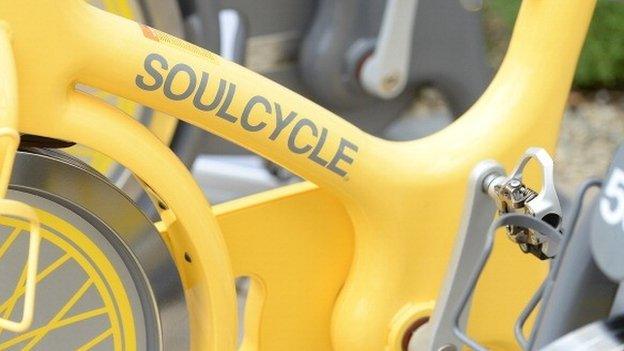Why are Americans hooked on SoulCycle?
- Published
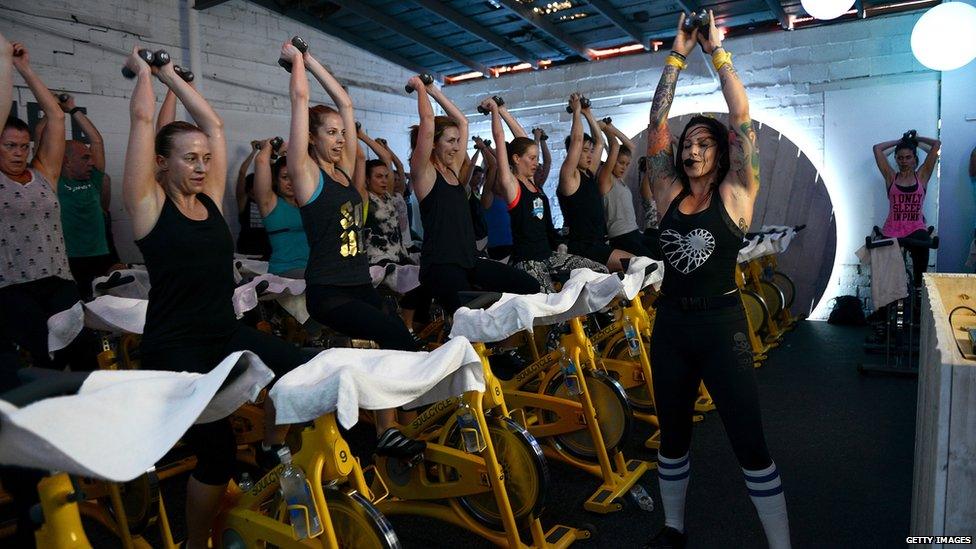
Soul Cycle's sessions are pricey, but its students are devoted
The US indoor cycling craze, Soulcycle has filed for an IPO. But what makes it so popular?
The lights dim save for a few candles in the room.
A perfectly toned instructor in figure-hugging spandex leggings takes to the stage in front. She carefully adjusts her Madonna style headset, as if poised for a dance routine at a 1980s rock concert.
Then the music is turned up. Loud. Ear crushingly loud. As the decibels rise, so does the temperature in the room.
More than 50 people, men and women mostly in their twenties and thirties, are positioned on yellow exercise bikes, so close to each other it's unclear whose sweat belongs to whom.
I'm one of them.
Welcome to Soulcycle, the American fitness craze which has just filed for an IPO, meaning this rapidly expanding phenomenon will soon be a player on the stock market.
Called a cult
The concept was born a decade ago in New York's Upper West Side by two women, Elizabeth Cutler and Julie Rice, who wanted to inject more fun into exercise.
What started as one studio, with 31 bikes, has now grown to 38 studios with more than 300,000 subscribers.
It's been called a cult by outsiders, who are baffled as to why legions of devotees in their sweatbands and leggings shell out more than $30 (£19) for a 45 minute session.
"Ok, come on, turn up the resistance, you guys!" shouts the instructor, as we are all told to stand up and move the dial on the bike a little further to the right.
This 70-cents-a-minute workout is conducted mostly while standing, our legs pedalling in unison to the pulsating beat of teen pop and dance music.
Up and down we move and lunge, working our abs. It's like a synchronised swimming class minus the water.
As an exercise abstainer who never goes to gyms, I work my way through the pain barrier, But I'm starting to feel something. I'm starting to feel stronger and more powerful, albeit sweatier.
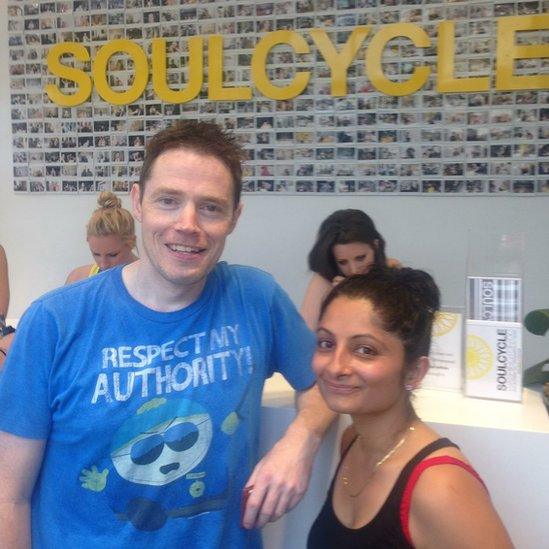
The BBC's Rajini Vaidyanathan (right) is a recent convert to SoulCycle
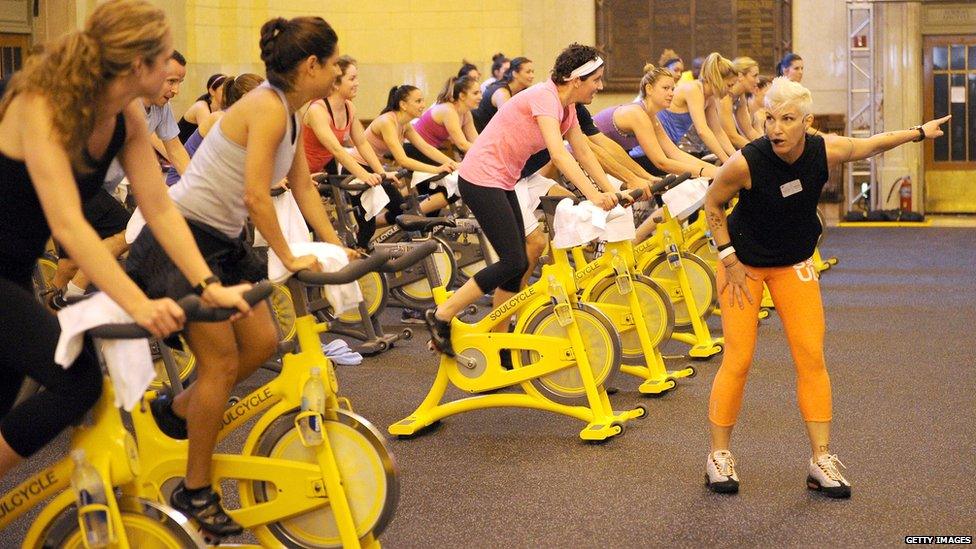
SoulCycle is part exercise class, part group therapy session
"Come on, turn the wheel. You can climb to the top of that hill and smash those goals," we are told, in increasingly shrill tones. Every turn of the pedal becomes more difficult, until it feels like I'm wading in thick sludge.
Then we move onto the weights - lifting them to the beat of Taylor Swift. Even the middle-aged man in the room is now dancing.
But this isn't just an exercise class, nor a conventional spin routine, Soulcycle brands itself as a place where you can come and "find your soul".
To that end, it's partly a group therapy session - at times the instructor morphs into an American motivational speaker - except we're not in a convention centre in the Midwest.
The walls of the studio speak to us, as we pedal ever faster. "Hero", "Warrior", "Renegade" they tell us, as we are reminded about the collective journey we are all taking.
A packaged routine
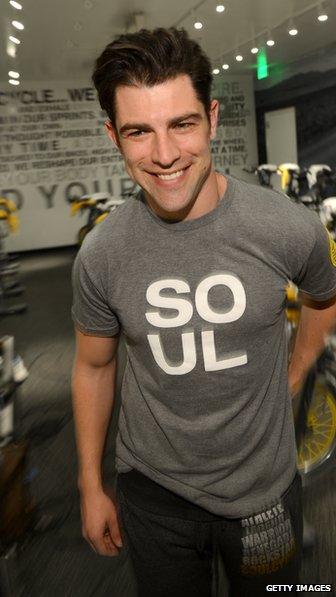
Celebrities like sitcom star Max Greenfield (above) and David Beckham are fans of SoulCycle
Unlike a slow day at the gym, you can't cheat your way into a shorter workout, your legs are stuck on the pedals, thanks to a pair of special shoes. They clip - or should that be trap - you into the bike the entire time.
Well-known devotees include David Beckham, external, Lady Gaga, Oprah and even the First Lady Michelle Obama. On one visit to the Soulcycle studio in DC, a fleet of black cars and dark suited Secret Service men lined the exit as Mrs Obama made a dash for it.
Weeks later I found myself a few bikes away from one of President Barack Obama's senior advisers - both of us trying not to laugh at the fact we'd swapped suits for spandex.
Perhaps part of the appeal is that - for the overly stressed, always on your way to a meeting, never have enough time to sleep let alone think, type A personality in Washington (insert other big American cities here) this is the perfectly packaged routine.
Short, intense and satisfying.
It's not cheap - many have criticised the inflated rates - but, as investors on the US stock market will soon learn, there's a willing client base.
And much as I hate to admit it, I'm one of those who has become curiously hooked.
- Published29 October 2014
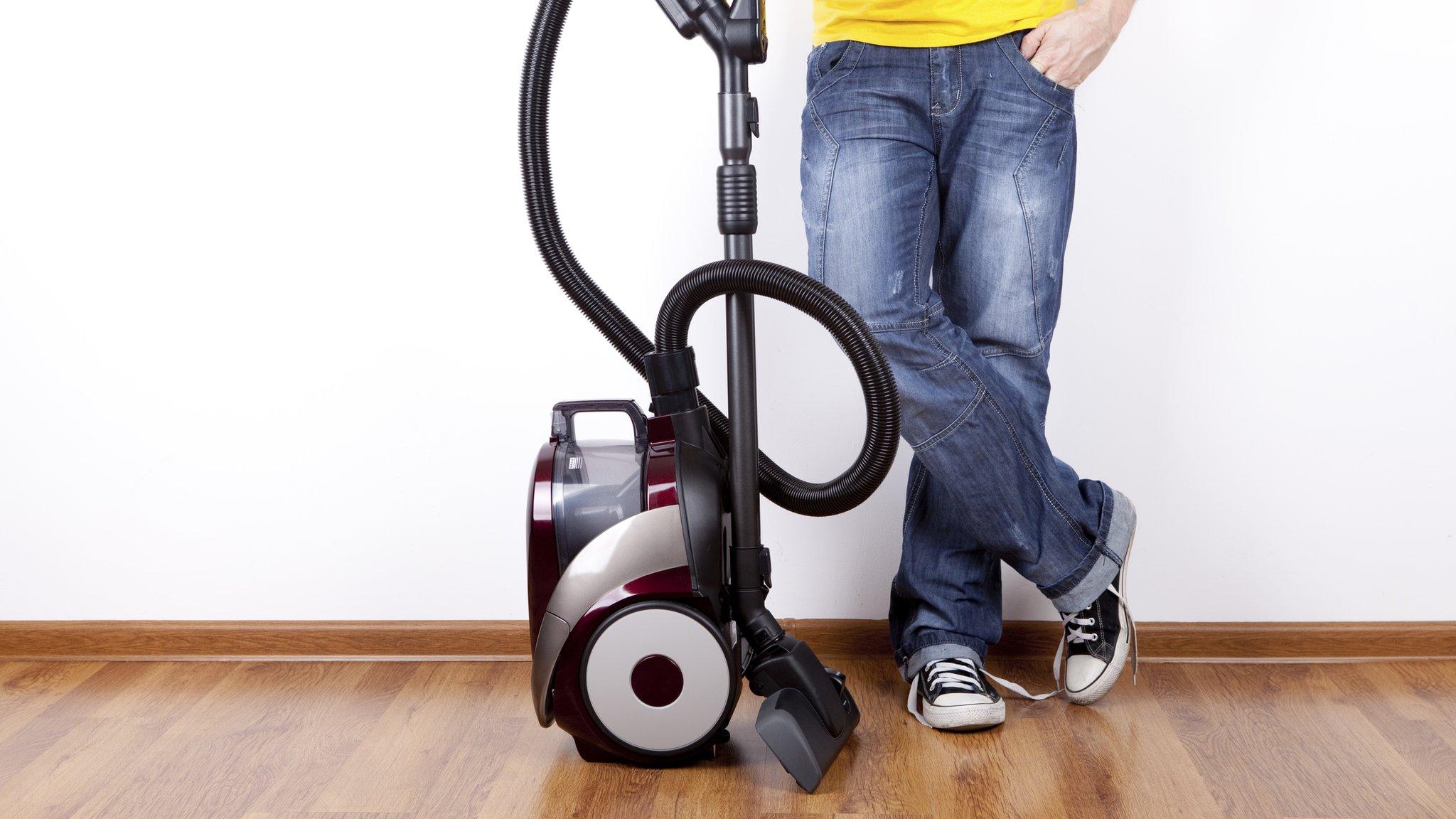
- Published19 January 2015
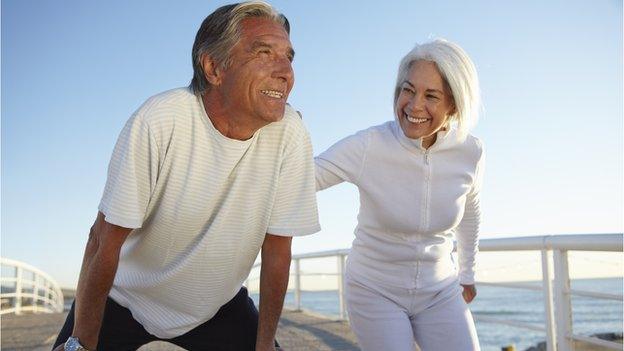
- Published30 July 2015
